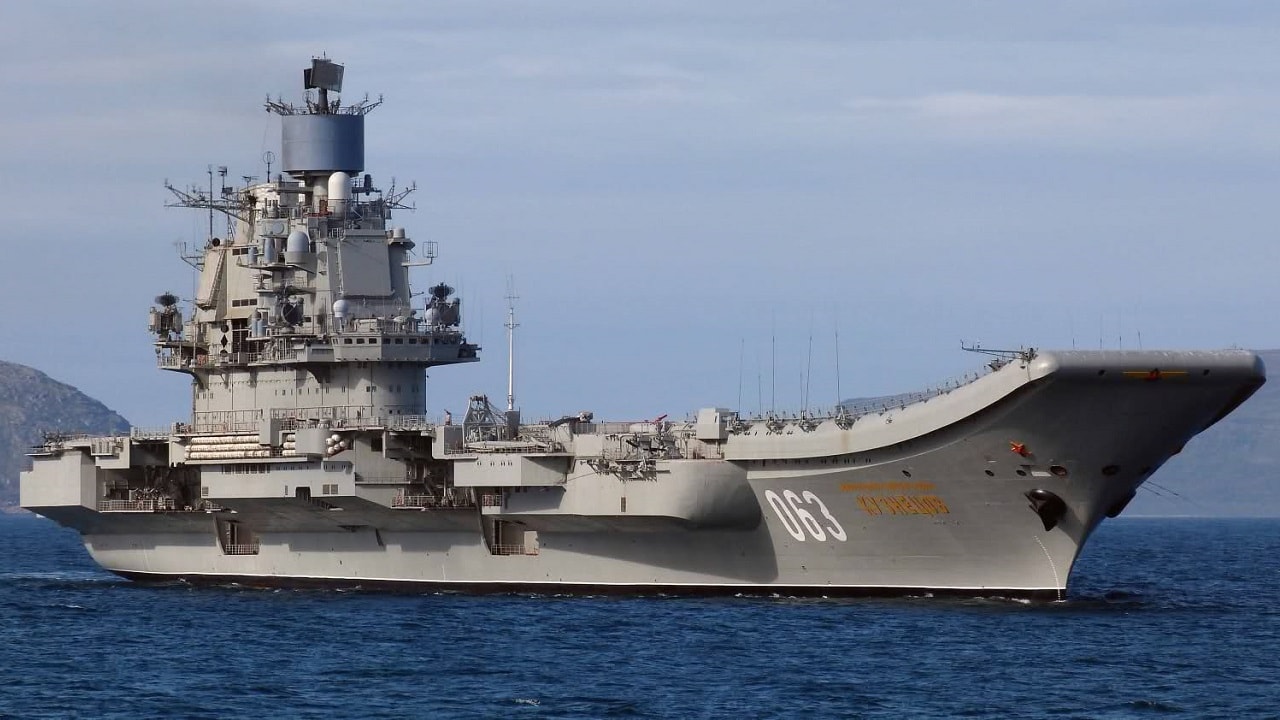Russia’s sole aircraft carrier is finally on the move after spending roughly 10 months squatting at the Sevmorput Naval Shipyard in the country’s northwest. Known for its bleak and disastrous history, Admiral Kuznetsov has suffered from a series of unfortunate events since its reintroduction to service in 2017.
A Russian-state-run media outlet revealed footage depicting the large vessel being pulled by a tugboat this week. Although officials with Russia’s Shipbuilding Corporation claim that all the underwater work necessary to revive the carrier is complete, a long and fruitful future for Admiral Kuznetsov is not a likely prospect.
Back in December, Russian outlets first reported that the carrier had begun the process of withdrawing from the dry dock. Just a few weeks prior to this, a “minor ” fire erupted onboard the vessel, and Ukraine’s defense ministry indicated that Admiral Kuznetsov was incapable of moving under its own power.
While these few incidents alone paint a dreary picture of Russia’s only aircraft carrier, the vessel has suffered far worse since its overhaul effort began.
Russia’s sole carrier has a bleak history
Initially developed in the early 1990’s, Admiral Kuznetsov was the only aircraft carrier to survive the dissolution of the Soviet Union. A sister ship was constructed alongside the Kuznetsov, however, it was not complete when the USSR and was ultimately repossessed by Ukraine.
Unlike U.S. carriers, the Kuznetsov’s primary job is to support and defend Russia’s surface ships and submarines and is not expected to sail long distances to project power.
One of the carrier’s main limiting factors is its power source. Mazut- the extremely thick and tarry substance that appears to engulf the Kuznetsov when it travels is not very efficient. Since a black hue of smoke surrounds the carrier in the water, the ship is detectable from miles away.
The Admiral Kuznetsov has had zero “wins” since 2017
The Kuznetsov’s lackluster construction is accompanied by constant mishaps on board. In 2016, the carrier deployed to combat in Syria for the first time. Unfortunately, two airframes were lost due to a faulty arresting wire, forcing the rest of the carrier-based platforms to relocate to shore.
While the Kuznetsov’s operational tour was bleak and minimal, continuous incidents seemed to plague the carrier upon its return home.
A floating crane came crashing down on the ship’s deck in 2018, killing one worker and injuring several others. One year later, 14 employees were sent to the hospital after a welding accident in the ship’s engine room broke out.
Following the Kuznetsov’s short stint in Syria, the vessel was sent home to undergo repairs meant to extend its lifespan. In October 2018, Russia’s largest floating dock- the PD-50- sank, ripping a 200-square-foot hole in the center of the carrier’s deck.
The decrepit state of Russia’s only aircraft carrier has only been magnified amidst the Kremlin’s ongoing invasion of Ukraine. Strapped monetarily by Western-imposed economic sanctions and facing a great weapons shortage, the current outlook of the Russian military does not look too promising.
However, the Kremlin will likely spin the slight movement of the Admiral Kuznetsov as a huge win domestically for propaganda purposes.
Author Expertise and Experience:
Maya Carlin is a Defense Editor with 19FortyFive. She is also an analyst with the Center for Security Policy and a former Anna Sobol Levy Fellow at IDC Herzliya in Israel. She has by-lines in many publications, including The National Interest, Jerusalem Post, and Times of Israel.

